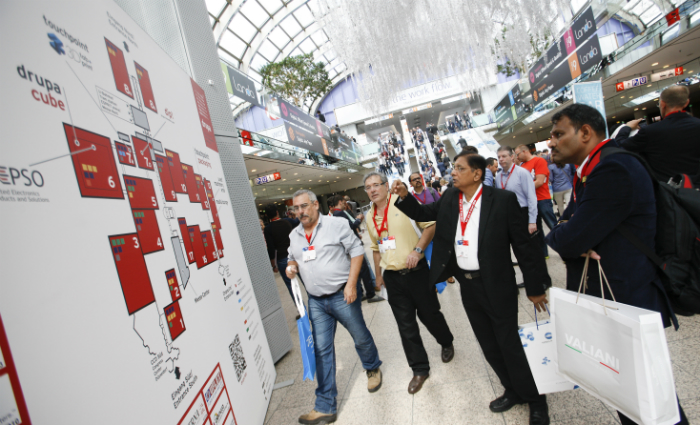Following last year’s show, drupa has released its fourth annual global trends report showing the improvement in the print industry after the GFC.
The report refrs to the rise in the proportion of turnover in digital print, 28 per cent of printers in 2015 reported more than 25 per cent of their turnover was digital, in 2016, 26 per cent.
The report shows digital print has an increasing hold on functional print with inkjet the dominant technology for most applications, up from 61 per cent in 2014 to 74 per cent in 2016. Similarly, digital continues to grow rapidly in commercial print for example, wide format print installations up from 37 per cent in 2013 to 50 per cent in 2016.
As for press investment plans, sheetfed litho led the global race followed by digital toner cutsheet colour. However, each of the four markets had a different number one press investment priority – commercial, digital toner cutsheet colour; publishing, sheetfed offset;; packaging, flexo; and functional, digital inkjet rollfed colour.
Digitally printed packaging has gained momentum, with 34 per cent of packaging printers offering digital print, up from 24 per cent in 2014.
Sabine Geldermann, director for drupa at Messe Duesseldorf, says, “Last year’s drupa showcased a global print industry that has regained its confidence in the future, with lots of fresh technology and applications demonstrated to enthuse both printers and their customers alike. This report shows that whilst levels of confidence vary between regions and markets, overall the print industry is on the up and will invest strongly to secure a prosperous future.
“All printers, whatever market or region they are based in, know that if they are to succeed in the long term, they must continue to adapt to the ever-changing market and economic conditions. This needs a ruthless approach to efficiency and automation while at the same time learning new skills and adding new added value services. Nevertheless, it is pleasing to report that overall, print has its mojo back.”
The report shows 42 per cent of printers describing their business in good economic condition while 11 per cent described it in poor economic condition.
The report showed a clear fall in the number of web-to-print installations globally down from 26 per cent in 2015 to 23 per cent in 2016. This decline was not universal; in Asia it rose, but in some regions, North America and Australia/Oceania, the fall was decisive. Turning to capital investment plans, 42 per cent spent more over the last 12 months and just 11 per cent spent less, a net balance of +31 per cent, and there was a net balance of +41 per cent in respect of plans for 2017.
For the first time the number one priority globally was finishing, followed closely by new Presses. That in turn was closely followed by prepress, workflow and MIS; a sign that automation is being taken seriously.
The survey, conducted by market research company Printfuture, was taken by 850 printers and 300 suppliers representing all regions and markets.


